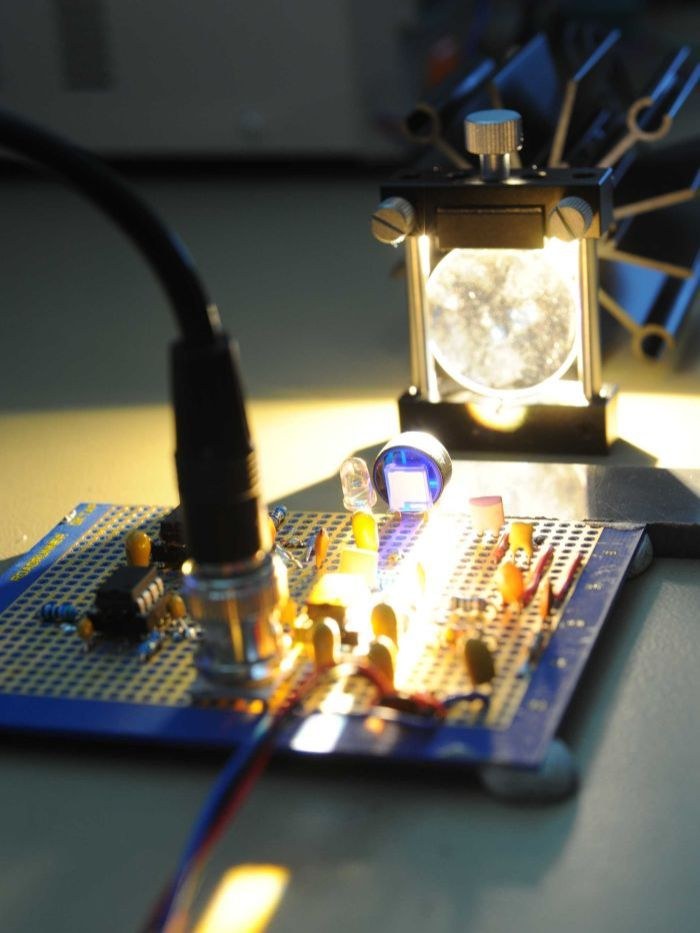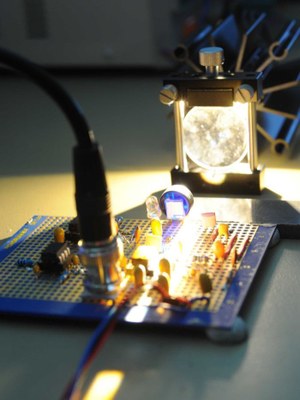Enhanced Data Transmission for Li-Fi Communications using LED Lighting
Despite continuous improvements in wireless communication technology, e.g. 3G, LTE, 4G etc., a looming crisis is anticipated due to a lack of sufficient radio frequency bandwidth to support the growth in demand for data transmission, in the so called “Spectrum Crunch”. Visible Light Communication (Li-Fi) offers an economical solution. LED lighting is now widely deployed and can, in parallel with its primary function, also be used for wireless communication. Li-Fi demonstrates significant improvements in security, safety and capacity over radio frequency communication, and ease of deployment as compared with fibre-optic cable. The LED link is untethered, enables links with many mobile devices, and is independent of any one host. Improvements to the data rate achievable using LEDs as the transmitter allows services based on Li-Fi concept to outperform other communication modes.
Technology
By providing a novel method of composing data frames for transmission via a unipolar signal, this Edinburgh technology allows optimisation of both spectral efficiency and power efficiency. A special configuration and encoding algorithm is applied to data frames occupying a single frequency band, before simultaneously transmitting the frames over a visible light communication link, and successfully separating them again at the transmitter by use of symmetry properties in the decoder. The novel method applies to any intensity modulated transmission medium where direct detection is employed, and acts to reduce the effects of inter-symbol interference and to increase spectral efficiency.
Exemplification Data
Modelling data shows that for a given constellation size (i.e. a given number of symbols [and carriers] within a data frame) there is a doubling of spectral efficiency and, therefore, a greatly enhanced data rate as compared with standard ACO-OFDM, PAM-DMT and U-OFDM, and a 2dB advantage in optical power over DCO-OFDM for a similar spectral efficiency.
Key Benefits:
- Reduced power requirement at a given data rate and overall improvements in system performance
- Near doubling of data transmission rates
- Flexibility and consistency in deployment of high data rate Li-Fi
Applications:
- Communications - in particular, those applications where the connectivity between mobile devices and data providers causes bottleneck issues, such as: indoor communications; hospitals; sports arenas; aviation; security/military; underwater
IP Status:
UK priority patent application filed.
Development Status: Laboratory prototype
Publication: Pre-print available on request
The University of Edinburgh is seeking potential industry partners to license this technology.


